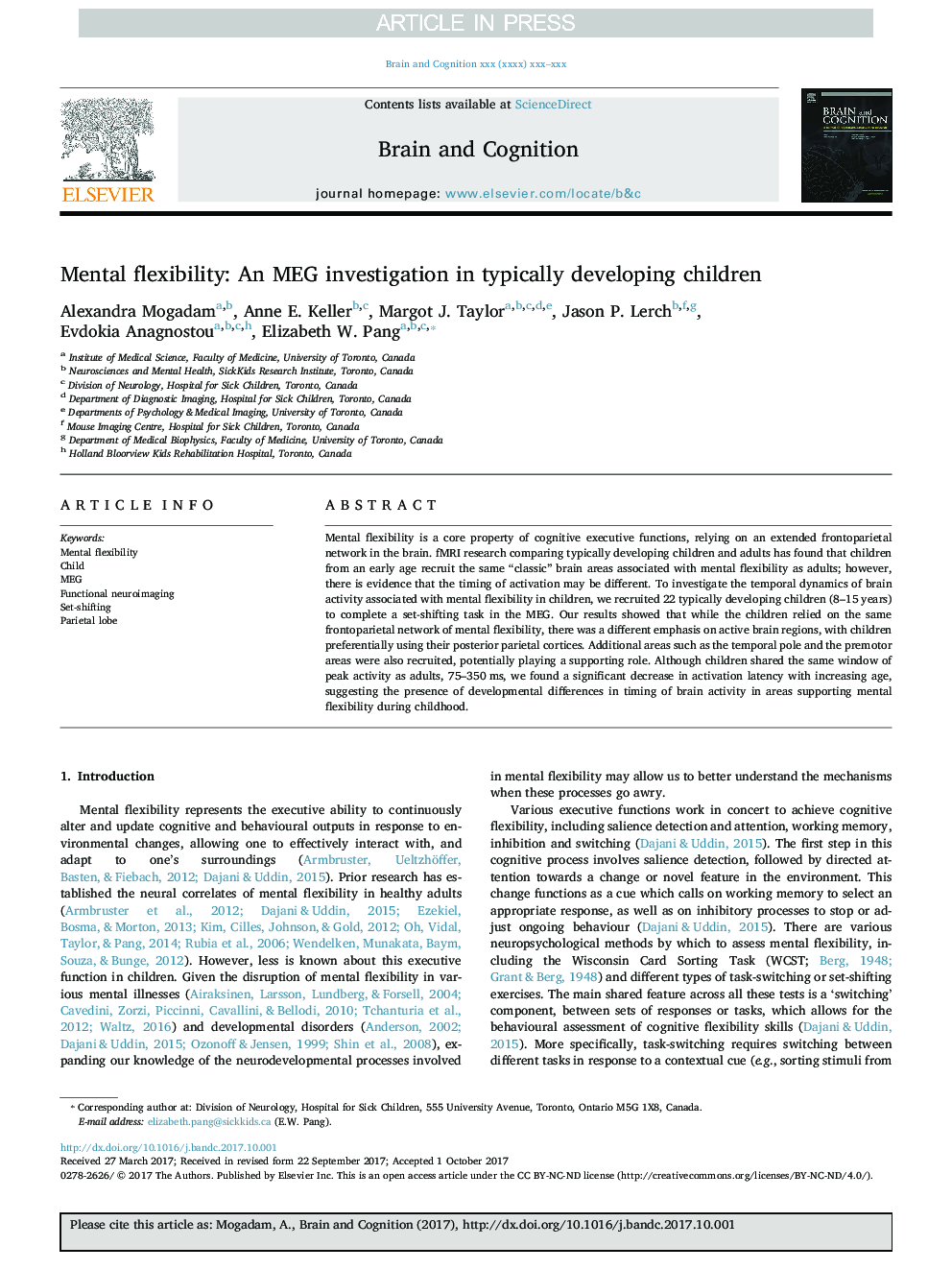| Article ID | Journal | Published Year | Pages | File Type |
|---|---|---|---|---|
| 7282788 | Brain and Cognition | 2018 | 9 Pages |
Abstract
Mental flexibility is a core property of cognitive executive functions, relying on an extended frontoparietal network in the brain. fMRI research comparing typically developing children and adults has found that children from an early age recruit the same “classic” brain areas associated with mental flexibility as adults; however, there is evidence that the timing of activation may be different. To investigate the temporal dynamics of brain activity associated with mental flexibility in children, we recruited 22 typically developing children (8-15 years) to complete a set-shifting task in the MEG. Our results showed that while the children relied on the same frontoparietal network of mental flexibility, there was a different emphasis on active brain regions, with children preferentially using their posterior parietal cortices. Additional areas such as the temporal pole and the premotor areas were also recruited, potentially playing a supporting role. Although children shared the same window of peak activity as adults, 75-350Â ms, we found a significant decrease in activation latency with increasing age, suggesting the presence of developmental differences in timing of brain activity in areas supporting mental flexibility during childhood.
Related Topics
Life Sciences
Neuroscience
Cognitive Neuroscience
Authors
Alexandra Mogadam, Anne E. Keller, Margot J. Taylor, Jason P. Lerch, Evdokia Anagnostou, Elizabeth W. Pang,
